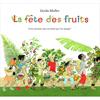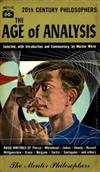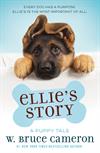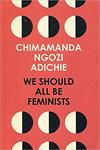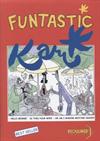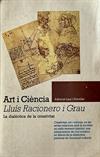
The Marriage Plot
3 journalers for this copy...
Journal Entry 1 by  crimson-tide
crimson-tide from Balingup, Western Australia Australia on Sunday, November 10, 2013
from Balingup, Western Australia Australia on Sunday, November 10, 2013
 crimson-tide
crimson-tide from Balingup, Western Australia Australia on Sunday, November 10, 2013
from Balingup, Western Australia Australia on Sunday, November 10, 2013
Duplicate copy.
Amazon.com Review:
Amazon Best Books of the Month, October 2011: Even among authors, Jeffrey Eugenides possesses a rare talent for being able to inhabit his characters. In The Marriage Plot, his third novel and first in ten years (following the Pulitzer Prize-winning Middlesex), Eugenides describes a year or so in the lives of three college seniors at Brown in the early 80s. There is Madeleine, a self-described “incurable romantic” who is slightly embarrassed at being so normal. There is Leonard, a brilliant, temperamental student from the Pacific Northwest. And completing the triangle is Mitchell, a Religious Studies major from Eugenides’ own Detroit. What follows is a book delivered in sincere and genuine prose, tracing the end of the students’ college days and continuing into those first, tentative steps toward true adulthood. This is a thoughtful and at times disarming novel about life, love, and discovery, set during a time when so much of life seems filled with deep portent.
Amazon.com Review:
Amazon Best Books of the Month, October 2011: Even among authors, Jeffrey Eugenides possesses a rare talent for being able to inhabit his characters. In The Marriage Plot, his third novel and first in ten years (following the Pulitzer Prize-winning Middlesex), Eugenides describes a year or so in the lives of three college seniors at Brown in the early 80s. There is Madeleine, a self-described “incurable romantic” who is slightly embarrassed at being so normal. There is Leonard, a brilliant, temperamental student from the Pacific Northwest. And completing the triangle is Mitchell, a Religious Studies major from Eugenides’ own Detroit. What follows is a book delivered in sincere and genuine prose, tracing the end of the students’ college days and continuing into those first, tentative steps toward true adulthood. This is a thoughtful and at times disarming novel about life, love, and discovery, set during a time when so much of life seems filled with deep portent.
Journal Entry 2 by  crimson-tide
crimson-tide at Balingup, Western Australia Australia on Wednesday, November 20, 2013
at Balingup, Western Australia Australia on Wednesday, November 20, 2013
 crimson-tide
crimson-tide at Balingup, Western Australia Australia on Wednesday, November 20, 2013
at Balingup, Western Australia Australia on Wednesday, November 20, 2013
Listed on the OZ VBB and chosen by livrecache.
Journal Entry 3 by  crimson-tide
crimson-tide at Balingup, Western Australia Australia on Wednesday, November 20, 2013
at Balingup, Western Australia Australia on Wednesday, November 20, 2013
 crimson-tide
crimson-tide at Balingup, Western Australia Australia on Wednesday, November 20, 2013
at Balingup, Western Australia Australia on Wednesday, November 20, 2013
Released 10 yrs ago (11/20/2013 UTC) at Balingup, Western Australia Australia
CONTROLLED RELEASE NOTES:
Heading east to Victoria to livrecache. Hope you enjoy it.
Thank you, crimson-tide, for sending me this book. I'm hoping that I enjoy this as much as I enjoyed Middlesex and, to a lesser extent The Virgin Suicides.
Thank so much for the opportunity to read it. I shall pass it to the OZ VBB
I read it ages ago and am now struggling to recall a lot about it so I'm using a truncated review from The Guardian – this review struck a chord with me as the reviewer compares it to the author's other books, a comparison I also made, not so articulately.
'The Marriage Plot's cast consists mostly of bright, go-getting young Ivy Leaguers, and its storyline follows their love entanglements and spiritual crises during the early 1980s as they pursue and escape each other through a variety of colourful locations that stretch from Cape Cod to Monte Carlo to Calcutta. With one exception there is nothing seriously the matter with any of them.
It's customary to cheer when an author moves outside his comfort zone [of the morbid], but I'm not sure it was such a great idea in this case. In tilting the focus so emphatically towards the wholesome and ordinary, Eugenides seems to have restricted his access to his own considerable powers. The lively intelligence of the earlier books has little to grapple with in these mostly unremarkable characters as they make their intellectual and geographic grand tours, and consequently much of the writing veers between effortful smartness and a kind of half-hearted blah. "Paris was a museum displaying exactly itself"; "Calcutta felt like the first real place he'd been"; "Reading a novel after reading semiotic theory was like jogging empty-handed after jogging with hand weights"; "The mind of Thomas à Kempis, the author of The Imitation of Christ, was difficult to connect with", are some fairly typical lines. They don't, to me, suggest an imagination on fire.
The story itself, a post-modern take on 19th-century romance, is built around three characters who meet at Brown University's semiotics class in 1981. Madeleine, the ingenue, is an English major from a prosperous Wasp family with a nice home in the suitably twee-sounding town of Prettybrook, New Jersey. Mitchell and Leonard, the men she must choose between (I'm simplifying, but it boils down to this), come from humbler backgrounds and study religion and science respectively. Mitchell, well-behaved and presentable, plays the Mr Knightley role: patiently besotted with Madeleine, who flirts with him occasionally but prefers to think of him as her treasured friend. Leonard is the wild card: a 6ft 3in polymath who lives in squalor, writes brilliantly (so we're assured), is "historically hilarious", irresistible to women, and savagely self-destructive.
He also turns out to be clinically bipolar (Eugenides's one concession to his old interest in pathological conditions) but Madeleine marries him all the same, and therein lies the book's main source of tension: how is "positive, privileged, sheltered, exemplary" Madeleine, who "instinctively avoided unstable people", going to acquit herself, having chosen this loose cannon for her mate? Will she stay the course? Will the long-suffering Mitchell, trying out various forms of religion and do-gooding (including a stint with Mother Teresa in India) while he endures his rejection, begin to look more tempting when Leonard goes off his meds and starts cracking up?
Framing and shaping this story is a sustained inquiry into the great themes of love and marriage, and the question of how they might be rescued for contemporary literature. Madeleine discovers Roland Barthes's A Lover's Discourse, and her growing infatuation with Leonard is punctuated by apposite quotations from this famous deconstruction of yearning, while the novel itself squares up to the classics of marital fiction, notably Emma and The Portrait of a Lady.
"What would it matter whom Emma married if she could file for separation later?" Madeleine's professor asks. "How would Isabel Archer's marriage to Gilbert Osmond have been affected by the existence of a prenup?" This is the task the book sets itself: to see if a viable "marriage plot" might be constructed around a feminist-era heroine for whom marriage no longer means an irrevocable surrender of person and property.
It's a likably Quixotic challenge; but I think it's premised on a misconception about those earlier books. What makes them great, surely, isn't just that marriage back then was a much higher-stakes game than it is now, but that their heroines are explored at such astounding emotional and moral depth, and articulated with such wit and precision, that just about anything that happens to them becomes rivetingly consequential. They would be no less interesting to us, I suspect, if the options of divorce and prenups were available to them. By the same token, I don't think the removal of those options would make Madeleine and her suitors any more interesting than they are, which is to say: moderately.
What do we ever really know about these three? We know about the books they read, the music they listen to, the things they consider cool or uncool. We know that they look like Audrey Hepburn, Jack Nicholson and Tom Waits. We're given plenty of interesting specialist information about their more arcane pursuits: Leonard's yeast experiments at the lab on Cape Cod where he gets a fellowship, for instance, or Madeleine's progress through the lit crit fads of the 80s. But information isn't the same as insight, and it seems to me that a couple of crucial things are missing.
One is the presence of some larger scale of values by which to measure these characters, than the cool/uncool scale by which they measure themselves. There's a fair amount of irony at the expense of undergraduate pretension and holier-than-thou posturing, and some of it spills over to the three protagonists. But at the same time the book wants you to take their yearnings and dilemmas seriously, and the result is a curious tonal indecisiveness. The presentation of Mitchell, especially, is so uncertainly poised between solemn and mocking that it's impossible to tell whether his gestures – hanging a cross round his neck, intoning the Jesus prayer – are intended as those of an earnestly agonised truth-seeker or of a slightly narcissistic sap. Either way, he's not a character you'd wish on any heroine.
The other missing piece, more important perhaps, is the kind of action that gives dramatic reality to the complexities of a character's inner life. This is less true of Leonard, whose volatility does create some vividly dynamic scenes (he seems to be modelled in part on the late David Foster Wallace, with his bandana and chewing tobacco). But the other two seem under-realised. There's a moment when Mitchell gets a letter from Madeleine and thinks that "she may have looked normal on the outside but once you'd seen her handwriting you knew she was deliciously complicated inside". But there's little to substantiate this; no equivalent of those precisely gauged moral interactions that make, say, Emma Woodhouse so complexly mesmerising (think of how her fatally entangled virtues and vices manifest themselves in her impact on her protégée, Harriet Smith).
What we actually see of Madeleine seems rather ruthlessly uncomplicated, in fact, and furthermore the book as a whole seems to vindicate her chilly instinct to avoid "unstable people". If she learns anything, it's that it's best not to stray too far from Prettybrook. Her tale makes a quick and sprightly read, but it's not – to borrow a word from the world of its literary predecessors – especially "edifying". And it certainly doesn't play to the idiosyncratic strengths of its gifted author.'
James Lasdun
I read it ages ago and am now struggling to recall a lot about it so I'm using a truncated review from The Guardian – this review struck a chord with me as the reviewer compares it to the author's other books, a comparison I also made, not so articulately.
'The Marriage Plot's cast consists mostly of bright, go-getting young Ivy Leaguers, and its storyline follows their love entanglements and spiritual crises during the early 1980s as they pursue and escape each other through a variety of colourful locations that stretch from Cape Cod to Monte Carlo to Calcutta. With one exception there is nothing seriously the matter with any of them.
It's customary to cheer when an author moves outside his comfort zone [of the morbid], but I'm not sure it was such a great idea in this case. In tilting the focus so emphatically towards the wholesome and ordinary, Eugenides seems to have restricted his access to his own considerable powers. The lively intelligence of the earlier books has little to grapple with in these mostly unremarkable characters as they make their intellectual and geographic grand tours, and consequently much of the writing veers between effortful smartness and a kind of half-hearted blah. "Paris was a museum displaying exactly itself"; "Calcutta felt like the first real place he'd been"; "Reading a novel after reading semiotic theory was like jogging empty-handed after jogging with hand weights"; "The mind of Thomas à Kempis, the author of The Imitation of Christ, was difficult to connect with", are some fairly typical lines. They don't, to me, suggest an imagination on fire.
The story itself, a post-modern take on 19th-century romance, is built around three characters who meet at Brown University's semiotics class in 1981. Madeleine, the ingenue, is an English major from a prosperous Wasp family with a nice home in the suitably twee-sounding town of Prettybrook, New Jersey. Mitchell and Leonard, the men she must choose between (I'm simplifying, but it boils down to this), come from humbler backgrounds and study religion and science respectively. Mitchell, well-behaved and presentable, plays the Mr Knightley role: patiently besotted with Madeleine, who flirts with him occasionally but prefers to think of him as her treasured friend. Leonard is the wild card: a 6ft 3in polymath who lives in squalor, writes brilliantly (so we're assured), is "historically hilarious", irresistible to women, and savagely self-destructive.
He also turns out to be clinically bipolar (Eugenides's one concession to his old interest in pathological conditions) but Madeleine marries him all the same, and therein lies the book's main source of tension: how is "positive, privileged, sheltered, exemplary" Madeleine, who "instinctively avoided unstable people", going to acquit herself, having chosen this loose cannon for her mate? Will she stay the course? Will the long-suffering Mitchell, trying out various forms of religion and do-gooding (including a stint with Mother Teresa in India) while he endures his rejection, begin to look more tempting when Leonard goes off his meds and starts cracking up?
Framing and shaping this story is a sustained inquiry into the great themes of love and marriage, and the question of how they might be rescued for contemporary literature. Madeleine discovers Roland Barthes's A Lover's Discourse, and her growing infatuation with Leonard is punctuated by apposite quotations from this famous deconstruction of yearning, while the novel itself squares up to the classics of marital fiction, notably Emma and The Portrait of a Lady.
"What would it matter whom Emma married if she could file for separation later?" Madeleine's professor asks. "How would Isabel Archer's marriage to Gilbert Osmond have been affected by the existence of a prenup?" This is the task the book sets itself: to see if a viable "marriage plot" might be constructed around a feminist-era heroine for whom marriage no longer means an irrevocable surrender of person and property.
It's a likably Quixotic challenge; but I think it's premised on a misconception about those earlier books. What makes them great, surely, isn't just that marriage back then was a much higher-stakes game than it is now, but that their heroines are explored at such astounding emotional and moral depth, and articulated with such wit and precision, that just about anything that happens to them becomes rivetingly consequential. They would be no less interesting to us, I suspect, if the options of divorce and prenups were available to them. By the same token, I don't think the removal of those options would make Madeleine and her suitors any more interesting than they are, which is to say: moderately.
What do we ever really know about these three? We know about the books they read, the music they listen to, the things they consider cool or uncool. We know that they look like Audrey Hepburn, Jack Nicholson and Tom Waits. We're given plenty of interesting specialist information about their more arcane pursuits: Leonard's yeast experiments at the lab on Cape Cod where he gets a fellowship, for instance, or Madeleine's progress through the lit crit fads of the 80s. But information isn't the same as insight, and it seems to me that a couple of crucial things are missing.
One is the presence of some larger scale of values by which to measure these characters, than the cool/uncool scale by which they measure themselves. There's a fair amount of irony at the expense of undergraduate pretension and holier-than-thou posturing, and some of it spills over to the three protagonists. But at the same time the book wants you to take their yearnings and dilemmas seriously, and the result is a curious tonal indecisiveness. The presentation of Mitchell, especially, is so uncertainly poised between solemn and mocking that it's impossible to tell whether his gestures – hanging a cross round his neck, intoning the Jesus prayer – are intended as those of an earnestly agonised truth-seeker or of a slightly narcissistic sap. Either way, he's not a character you'd wish on any heroine.
The other missing piece, more important perhaps, is the kind of action that gives dramatic reality to the complexities of a character's inner life. This is less true of Leonard, whose volatility does create some vividly dynamic scenes (he seems to be modelled in part on the late David Foster Wallace, with his bandana and chewing tobacco). But the other two seem under-realised. There's a moment when Mitchell gets a letter from Madeleine and thinks that "she may have looked normal on the outside but once you'd seen her handwriting you knew she was deliciously complicated inside". But there's little to substantiate this; no equivalent of those precisely gauged moral interactions that make, say, Emma Woodhouse so complexly mesmerising (think of how her fatally entangled virtues and vices manifest themselves in her impact on her protégée, Harriet Smith).
What we actually see of Madeleine seems rather ruthlessly uncomplicated, in fact, and furthermore the book as a whole seems to vindicate her chilly instinct to avoid "unstable people". If she learns anything, it's that it's best not to stray too far from Prettybrook. Her tale makes a quick and sprightly read, but it's not – to borrow a word from the world of its literary predecessors – especially "edifying". And it certainly doesn't play to the idiosyncratic strengths of its gifted author.'
James Lasdun
Forgettable.
Taking to a book fair tomorrow in the hope that someone will appreciate it.
Taking to a book fair tomorrow in the hope that someone will appreciate it.


